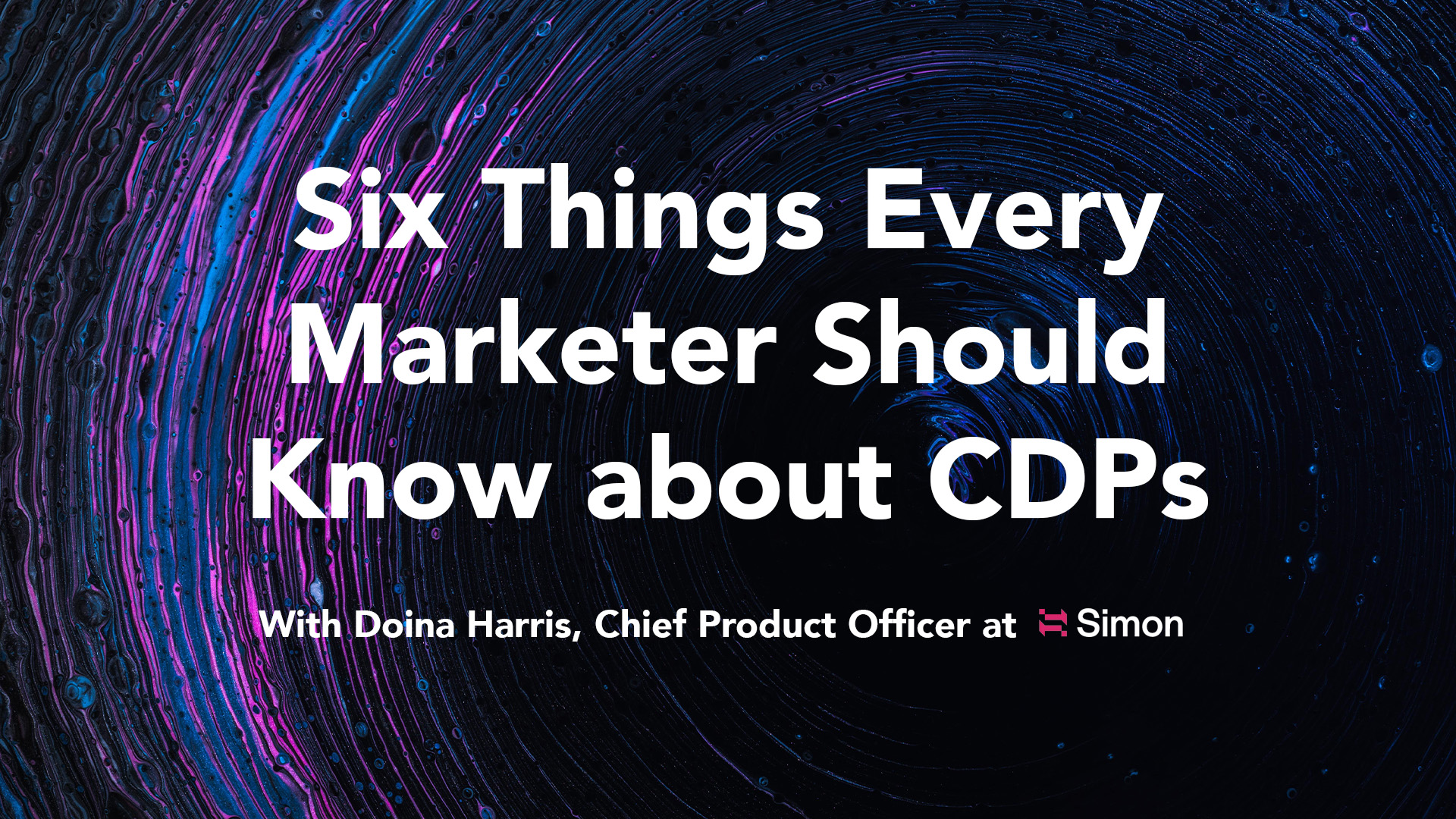Published by
Recently Doina Harris, Chief Product Officer at Simon Data, joined us on the Liftoff by Bottle Rocket podcast. She shared how companies can unlock the power of customer data while driving marketing results faster and ultimately driving growth.
What is a CDP and Why Should Marketers Care?
A CDP, or a customer data platform, is a centralized platform that allows you to listen, think and speak to your customers in a meaningful way. At the base level, CDPs allow marketers to use data to create better customer experiences, thus driving ROI. It sounds like a simple goal to most, but as marketers, we all know how difficult it can be. I’m passionate about simplifying data for marketers and allowing them to use their brain power to grow and expand their brand, rather than just thinking tactically about “how do I get this email out.”
Disjointed Experiences Are Jarring For The Customer
When thinking about experiences, it’s important to think of every aspect of the customer journey, not just the end result. For example, a brand I love (and my dog loves) is BarkBox. Let’s assume that I get a box that is damaged, I call or email customer support. The next interaction from the brand shouldn’t be “hey how was your dog’s experience with the box?” Since the box was broken, there was no experience. Instead, the experience should be “we heard your box is broken; there’s a new one on the way” or “here is a coupon code for a new box.” By taking into account that my box was damaged, that’s an experience that is connected and not disjointed for me as a customer.
You Have the Data, Now What?
The first step to using data successfully is connecting the relevant data to a specific customer using a CDP. Ultimately it needs to go someplace and ideally this is some sort of modern cloud data warehouse like Snowflake. The second step is to make sense of the data. Someone needs to understand what actions you’ve taken on the site or with customer support or via email. Lastly, the marketing team needs to be able to take all these data points and organize and aggregate it, and orchestrate an experience for customers in a seamless way. Let’s assume that you have the data beautifully aggregated in one place and the marketing team understands who you are, then they really need to think about what’s the best way to engage you. Not in a traditional marketing sense where you have performance marketing, advertisements, email , and SMS marketing all as separate channels, but all together. And if I bring this back to Simon, that’s what we do. We help marketers activate their data, creating real, personalized marketing use cases that drive results.
Think About the Value Exchange
With regulations about data changing rapidly, the best way to get data is directly from the customer. But what does the customer get from giving you their data? There has to be some advantage for the user. . “What do I get for installing your app, sharing my location, etc.” I’ve seen some things like “I’ll give you a beer if you give me your email.” But I’m not very sure about that sustainability of that value exchange. I encourage brands to think less about the communication, but more about relevant communication. I often tell marketers, “stop sending so many emails, literally send fewer emails.” To which they always respond with panic, but soon these KPIs that marketers rely so heavily on like email opens will go away. It ultimately comes down to the right message, at the right time, with the right content.
Start With The Use Case, Not Cool Capabilities
I think many brands have to cut the Gordian Knot sometimes. It’s almost too much, too much data, too much technology, too many innovations at once. There is a piece of technology for every use case you want, so take a step back and think about your ideal engagement. Often my customers come to me and give me a list of 20 use cases that they want to try and do. It jumps from zero to 10 or 20. My response is usually “what are the three most important things you can do as a marketing team for your business in the next six months?” Then from there, pick three main use cases . By focusing on those three, you can then make decisions on technology and vendors. First start with the use case, not the cool technology or capabilities someone can provide you.
Attribution Can Be Your Achilles Heel
Attribution is a pet peeve of mine. Many companies do really, really complex models of attribution that use complex tools, but ultimately aren’t driven by data. Even if you follow a customer across all interaction points, you still can’t run perfect attribution. The idea of attribution has ultimately become fake precision. For such a long time, people have said “oh 30% of this dollar went to Facebook, 32% on paid media, etc.” I think the moment the attribution model actually breaks and people start experimenting more, versus taking attribution as a gospel, I actually think it is going to be better for brands and customers. At Simon, we believe the best customer journey should lie in experimentation. Adopt a mindset of iteration and ideation instead of getting stuck in old KPIs, old attribution models and old organizational lines.
About Liftoff by Bottle Rocket
Brought to you by the experts at Bottle Rocket, ’Liftoff’ is a show about experience. We talk business transformation, product growth, leadership, and everything in between. It’s about real people, real advice and real conversations that can lead to actionable insights for your business. For more information about Liftoff, to book guests, or to listen to any of our past episodes, please visit https://www.bottlerocketstudios.com/liftoff.
Share:
Categories
tags
Related Posts

AI and the Future of Restaurant Hospitality

The Value of Agency Project Managers


